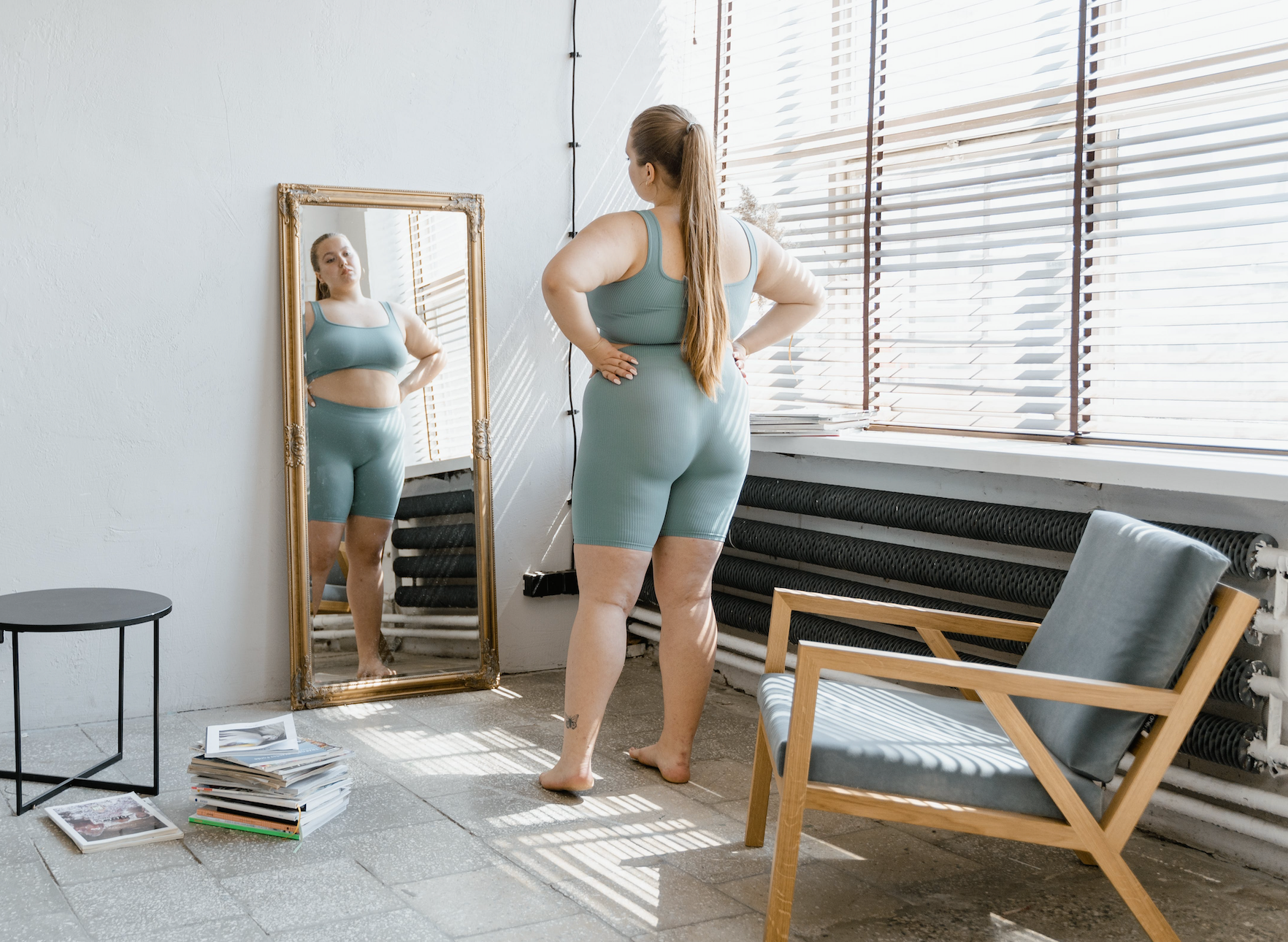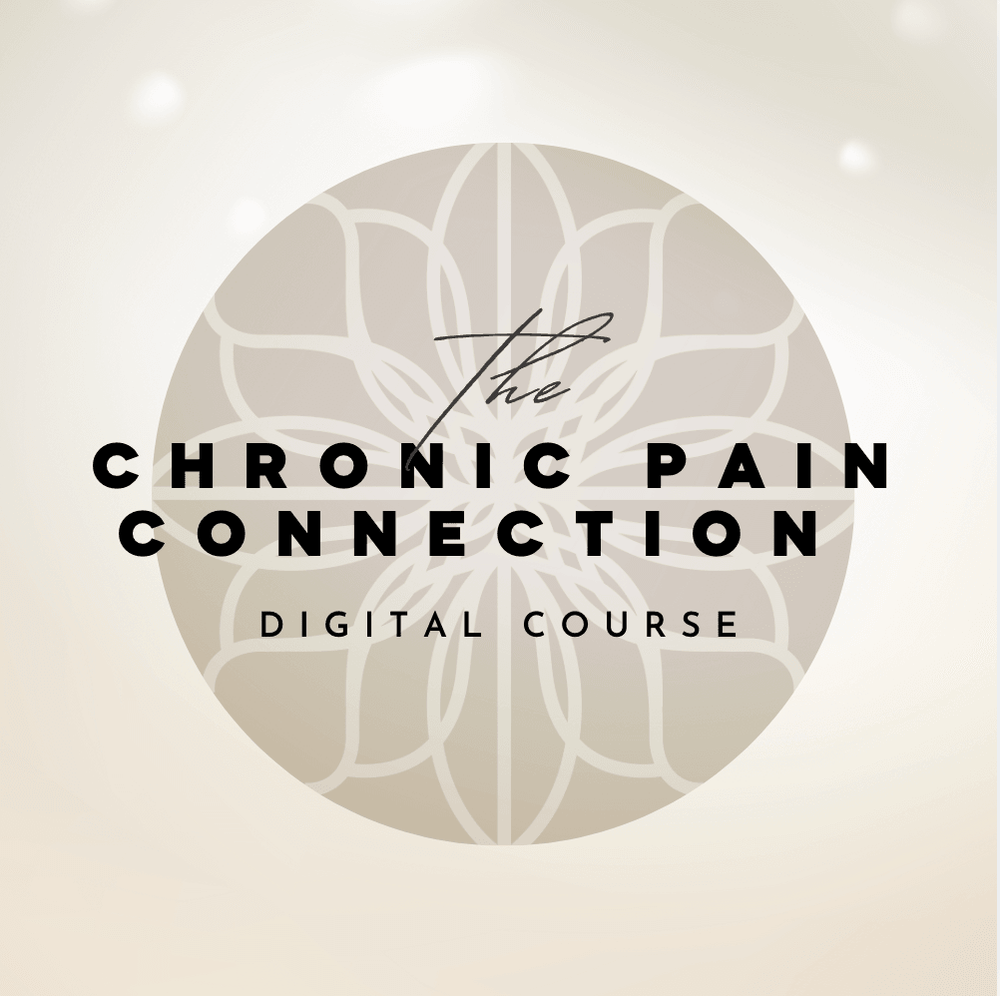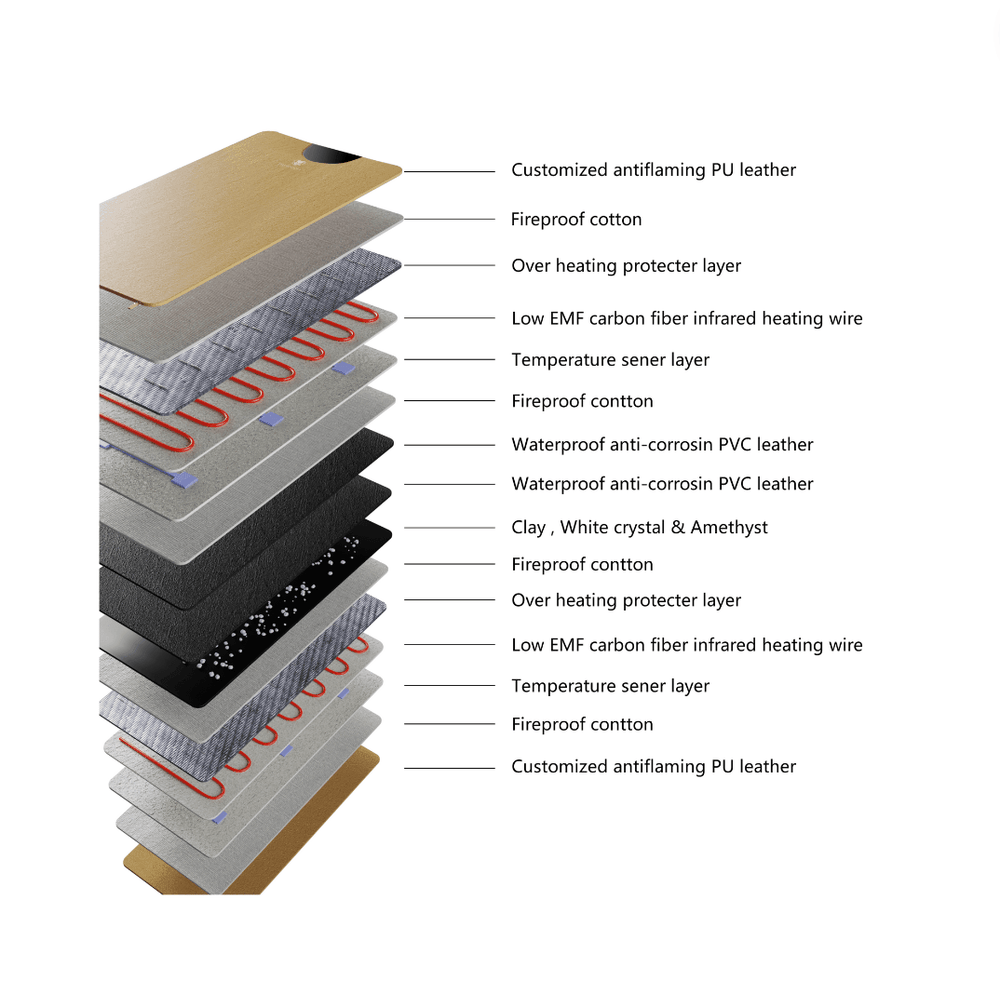It's Time To Rethink Language Around Weight
Weight has long been a topic of conversation, carrying with it a heavy burden of judgment and shame. But isn't it time we start rethinking our language around weight?
Instead of focusing solely on numbers and sizes, let's shift our attention to overall health and well-being. Weight is just one piece of the puzzle when it comes to being healthy. Our bodies are complex systems that thrive when treated with love, respect, and nourishment.
By reframing the conversation, we can create a more inclusive and compassionate narrative around weight. We can begin by celebrating the diversity of body shapes and sizes, the invisible conditions we wrestle with, and acknowledge that there is no one-size-fits-all standard for beauty or health. Let's focus on the sole measurement of how you feel inside your body.
Because it's important to recognize that weight is not always within an individual's control. Genetic factors, hormonal imbalances, and underlying health conditions can all play a role in a person's weight. Instead of blaming individuals for their size, let's shift the narrative toward understanding and support.
This language change also extends to ourselves. Let's stop berating ourselves for not fitting into society's narrow definition of beauty. Instead, let's embrace our bodies as they are, appreciating the incredible things they can do.
Rethinking the language around weight also means acknowledging that weight is not a measure of worth. Our value as individuals is not determined by the number on the scale or the size of our clothes. We are so much more than our physical appearance.
By shifting our focus from weight to overall health, we can promote positive behaviors and habits that benefit both our bodies and minds. Instead of obsessing over the number on the scale, let's prioritize nourishing ourselves with nutritious foods, engaging in regular exercise that we enjoy, and practicing self-care.
In this blog, it's time to break free from society's unrealistic beauty standards and embrace body positivity.

I Know I'm Not The Only One....
Common Misconceptions about Pain and Weight
When it comes to chronic pain and weight loss, it can sometimes feel like a never-ending cycle. Are you experiencing chronic pain because of your weight, or is the weight gain a result of the pain? It's a bit like the age-old question of which came first, the chicken or the egg?
The truth is, the relationship between weight and chronic pain is complex. Excess weight and obesity can indeed put additional stress on weight-bearing joints, leading to increased pain levels. However, it is also important to note that chronic pain itself can contribute to weight gain and obesity. People experiencing chronic pain often have limited mobility and may find it difficult to engage in physical activity.
Additionally, the emotional toll of living with chronic pain can lead to emotional eating and a sedentary lifestyle. Understanding the connection between weight and health, including the risks of obesity, is crucial in addressing chronic pain and promoting overall well-being.
Understanding the Role of Exercise in Managing Pain and Weight
It is important to address the misconception that traditional workouts work for everyone. The impact of chronic pain on your physical capabilities and limitations demands adaptable exercise routines tailored to specific needs. By understanding the role of exercise in managing pain, inflammation, and weight, you can customize your approach for maximum benefit.
The Truth about Exercise and Inflammation
Exercise, particularly regular physical activity, can have a profound impact on chronic pain management by addressing inflammation in the body. Chronic pain conditions often involve an inflammatory response, leading to increased pain levels and decreased functionality.
Why Traditional Workouts Might Not Work for Everyone
Traditional workout routines may not be suitable for individuals coping with chronic pain and trying to lose weight, highlighting the need for alternative approaches. Conventional exercise programs often follow a one-size-fits-all model, overlooking the unique needs and limitations of individuals experiencing chronic pain. Physical capabilities, metabolism, and body fat composition vary from person to person, necessitating personalized exercise regimens that incorporate much physical activity.
Additionally, chronic pain conditions may limit the intensity and duration of physical activity, making traditional workouts impractical or even harmful.
The Importance of Adapting Exercise to Individual Needs
Adapting exercise is paramount for successful chronic pain and weight loss. Customizing exercise routines based on pain thresholds, physical capabilities, and personal goals ensures a safe and supportive environment for long-term success.
This approach allows you to participate in physical activity without exacerbating pain or causing further injuries. By recognizing and accommodating your individual needs, whether through modified exercises, low-impact activities, or specialized programs, you can manage chronic pain while reaping the physical, emotional, and psychological benefits of exercise.
Tailoring exercise to individual requirements fosters a sense of control, empowerment, and overall well-being, maximizing the efficacy of pain and weight loss strategies.

Rethinking Weight Loss Strategies
When it comes to weight loss, adopting sustainable lifestyle changes is essential for long-term success. Shifting away from simplistic approaches like "eat less, move more," you can embrace a holistic approach that incorporates healthy eating, regular physical activity, and meaningful lifestyle changes.
Rethinking weight loss strategies involves moving beyond calorie intake and food groups, focusing on moderation, balanced nutrition, and realistic goals. Prioritizing lifestyle changes and a new relationship with food can create a sustainable framework for weight loss that promotes overall health, disease control, and long-term well-being.
Focusing on Sustainable Lifestyle Changes
Fostering sustainable lifestyle changes is the key to successful weight loss and chronic pain control. By prioritizing lifestyle changes, you can create lasting, health-promoting habits that extend beyond short-term weight loss.
Embracing a holistic, patient-centric approach to weight loss takes into account your individual needs, preferences, and challenges, ensuring long-term success. By focusing on sustaining healthy lifestyle changes, you can gain control over your weight, manage chronic pain effectively, and improve overall well-being in the long run.
Healing is not possible while in a state of stress.
However, to achieve optimal health and weight management, it is vital to reduce stress levels. Chronic stress has a direct impact on our bodies, leading to increased cortisol levels which can contribute to weight gain and hinder healing processes.
Therefore, it is important to prioritize stress reduction techniques that bring joy and relaxation. By creating a calm and peaceful environment, you can support your overall well-being and facilitate the healing process.
Dealing with Emotional and Psychological Aspects of Weight
Weight-a-tude goes beyond physical changes - it also involves addressing the emotional and psychological aspects associated with chronic pain. Here are some crucial considerations when dealing with the emotional and psychological aspects of weight management:
- Acknowledge the emotional toll of chronic pain and weight struggles - Recognize and validate the impact that chronic pain and weight management can have on your emotional well-being.
- Develop coping strategies - Implement healthy coping strategies, such as stress management techniques, seeking support from loved ones, or engaging in activities that bring joy and relaxation.
- Nurture emotional well-being through self-care - Prioritize self-care activities that promote emotional health, such as regular exercise, quality sleep, and engaging in hobbies or interests that bring fulfillment.
- Address stressors and triggers - Identify and address stressors, both related to chronic pain and weight management, and develop strategies to manage them more effectively.
By addressing the emotional and psychological aspects of weight management, you can cultivate a healthy mindset, foster resilience, and navigate the challenges associated with chronic pain and weight struggles.
The Role of Mindful Practices in Managing Pain and Weight
Mindful practices, including meditation, journaling, and stress management techniques, can significantly impact pain management, weight loss, and overall well-being. By cultivating awareness and focusing on the present moment, you can better understand your body's needs, manage stress, and develop healthy habits. By incorporating mindful practices into daily routines, you gain a greater sense of control, enhanced emotional well-being, stress relief, and improved blood pressure and physical health.
Let's explore the role of meditation for stress and pain relief, the benefits of journaling for emotional well-being, and how these practices contribute to managing weight, chronic pain, and maintaining a healthy lifestyle.
The Value of Meditation for Stress and Pain Relief
Meditation, a practice of focused attention and mindfulness, offers immense value in stress and pain relief while promoting overall well-being. Here are some key benefits of incorporating meditation into your routine:
- Stress relief - Meditation techniques, such as deep breathing, body scan, or guided visualization, can help calm the mind, reduce stress, and promote relaxation.
- Pain management - By directing awareness to the present moment, meditation can help you observe pain without judgment, reduce its intensity, and improve the ability to cope with chronic pain.
- Emotional well-being - Regular meditation practice can enhance emotional resilience, promote positive emotions, and improve mental health.
Finding a meditation method that resonates with you, whether through guided meditation apps, attending meditation classes, or practicing at home, can empower individuals to manage stress, reduce pain, and cultivate a healthy mindset.

Journaling for Emotional Well-being
Journaling, the practice of expressive writing, provides an outlet for emotional release, enhances self-reflection, and aids in managing chronic pain and weight concerns. Here are some benefits of journaling for emotional well-being:
- Emotional expression - Journaling allows you to process and articulate your feelings, reducing emotional distress and promoting self-awareness.
- Coping mechanisms - Writing about challenges, pain, and weight management struggles helps you develop coping strategies, gain perspective, and find solutions.
- Personal growth - Regular journaling promotes self-reflection, identifies patterns, and tracks progress, leading to personal growth and a deeper understanding of oneself.
Making journaling a regular practice, whether it's writing in a physical journal, using a digital platform, or utilizing journaling prompts, can have a profound effect on emotional well-being, stress management, and overall life satisfaction.

Creating a Personalized Plan for Pain and Weight Loss
Creating a personalized plan is fundamental to efficiently managing chronic pain and weight. Here are crucial steps for developing an individualized plan:
Assessing Your Current Habits and Needs
Assessing your current situation, usual habits, and health information is the first step toward creating a tailored plan. By gaining a holistic understanding of your lifestyle, pain levels, nutritional intake, and physical activity, you can identify areas for improvement and potential triggers that contribute to your chronic pain and weight concerns. This includes taking a closer look at your eating patterns and daily routine to see where changes can be made for long-term, successful weight loss.
Setting Achievable Goals
Setting achievable goals is crucial for long-term success in pain and weight loss. By setting realistic, specific, and measurable goals, such as losing 5% of your current weight, you can stay motivated, track progress, and make incremental changes that lead to sustainable improvements. When setting goals, consider your current capabilities, lifestyle, and pain management needs, ensuring that they align with your long-term vision. By breaking down larger goals into smaller, manageable steps, you can create a sense of achievement, build momentum, and create lasting changes that support your overall health and well-being, including reducing the risk of chronic health problems such as heart disease and type 2 diabetes.
Exploring Soft Exercises for Pain Relief and Weight Loss
For individuals with chronic pain, incorporating gentle, low-impact exercises can be an effective approach to managing pain and weight. While high-intensity workouts may not be suitable, several soft exercise options can provide relief and support weight loss.
Let's explore some of these options, including the effectiveness of infrared sauna blankets, the benefits of self-massage, the potential of vibrational plates, and the importance of light walking in pain management. By discovering these alternatives, you can find exercise practices that suit your needs, promote pain relief, and contribute to overall weight loss.
The Effectiveness of Infrared Sauna Blanket
Infrared sauna blankets have gained popularity for their potential benefits in weight loss, metabolism, and pain relief. The infrared heat emitted by these blankets penetrates deeper into the body, promoting blood flow, increasing heart rate, and inducing sweating, resembling traditional saunas. Here are some key points to consider about the effectiveness of infrared sauna blankets:
- Improved metabolism - The increase in heart rate and blood circulation can potentially boost metabolism, aiding in weight loss.
- Pain relief - Some individuals report pain relief and relaxation benefits from using infrared sauna blankets as the heat helps improve blood flow and promote muscle relaxation.
- Calorie burn - Using infrared sauna blankets can potentially aid in calorie burn, although the exact number of calories burned may vary depending on individual factors such as weight, duration of use, and intensity of the session.
- Detoxification - Sweating induced by infrared heat helps eliminate toxins from the body, which can indirectly support weight loss efforts.
- Stress reduction - The experience of using an infrared sauna blanket can promote relaxation and reduce stress levels, which may contribute to emotional eating habits.
- Improved sleep - Regular use of infrared sauna blankets has been known to enhance sleep quality, allowing for better hormonal regulation and potential weight loss benefits.
- Convenient and time-efficient - Unlike traditional saunas where users have to travel to a specific location, infrared sauna blankets offer the convenience of being used in the comfort of your own home. This eliminates any excuses for not incorporating sauna sessions into your routine, making it easier to stay consistent with your weight loss goals.
- Cost-effective - Using infrared sauna blankets can be a cost-effective alternative to traditional saunas. With a one-time investment, you can enjoy the benefits of infrared heat therapy without the need for expensive spa visits or memberships.
- Time-efficient- No longer do you have to carve out extra time in your busy schedule to travel to a specific location. Instead, you can simply wrap yourself in the blanket and relax in the comfort of your own home.

Benefits of An At Home Self-Massage
Self-massage is a gentle and effective approach to managing pain and supporting weight loss. By using techniques such as kneading, stroking, and applying pressure to specific areas of the body, individuals can experience the following benefits:
- Pain reduction - Self-massage can help alleviate muscle tension and reduce pain caused by physical activity or chronic conditions. By targeting areas of discomfort, individuals can find relief and improve overall well-being.
- Stress relief - The soothing nature of self-massage promotes relaxation and helps reduce stress levels. This can be particularly beneficial for individuals who experience stress regularly, as it allows them to take some time for themselves and unwind.
- Improved circulation - Massaging the body stimulates blood flow, which can have numerous benefits. Better circulation means oxygen and nutrients are delivered more efficiently to the muscles, helping with recovery and promoting overall health.
- Weight management support - While self-massage alone may not lead to significant weight loss, it can assist in weight management efforts. By reducing muscle tension and promoting relaxation, self-massage can help individuals feel more comfortable during physical activity, making it easier to engage in regular exercise.
- Enhanced mood - Self-massage has been found to have mood-boosting effects. The physical touch and release of tension can stimulate the production of endorphins, the body's natural feel-good chemicals. This can result in an improved mood and a greater sense of well-being.
- Convenient and time-efficient - Self-massage is a convenient and time-efficient way to incorporate relaxation and self-care into your daily routine. Unlike traditional massages that require scheduling appointments and traveling to a spa, self-massage can be done anytime and anywhere. Whether you're at home, in the office, or even on-the-go, taking a few minutes to knead away tension and stress can have significant benefits for your overall well-being. Additionally, self-massage techniques are easy to learn and can be tailored to suit your individual needs.
- Cost-effective - Self-massage is a cost-effective alternative to professional massages. While traditional massages can be quite expensive, by learning simple techniques and using tools you can achieve similar benefits without breaking the bank.
- Self-empowerment - One of the greatest advantages of self-massage is the sense of empowerment it brings. By taking control of your own well-being and incorporating self-care into your daily routine, you become more in tune with your body's needs and can address any areas of tension or discomfort on your own terms.

How Vibrational Plates Can Help
Vibrational plates, also known as whole-body vibration machines, have emerged as a potentially beneficial tool for weight loss, muscle strength, and pain management. Here are some key benefits associated with the use of vibrational plates:
- Weight loss - Vibrational plate exercises, such as standing or performing squats on the machine, can engage multiple muscle groups simultaneously, potentially aiding in weight loss.
- Muscle strength and endurance - The vibrations produced by the machine can stimulate muscle contractions, promoting muscle strength, endurance, and overall physical fitness.
- Potential pain relief - Some studies suggest that whole-body vibration therapy may help alleviate pain and muscle soreness associated with chronic conditions.
Importance of Light Walking in Pain Management
Incorporating light walking into daily routines, beginning with shorter distances or durations, and gradually increasing as tolerated, can contribute to pain relief, weight loss, and overall physical well-being. Here are some reasons why light walking is important in pain management:
- Gentle exercise - Light walking provides a low-impact, gentle form of exercise that can be adapted to individual pain levels and mobility.
- Promotes physical activity - Regular physical activity, such as light walking, can help manage weight, improve cardiovascular health, and enhance mood.
- Supports pain management - Moving the body, even gently, can help reduce stiffness, improve joint flexibility, and alleviate pain associated with chronic conditions.
Know You're Not Alone....
When it comes to falling for common misconceptions about pain and weight, and recognizing the impact that weight can have on chronic pain conditions. When it comes to managing both pain and weight, traditional workouts might not work for everyone, including you.
And That's That!
Wrapping it up, chronic pain and weight issues can be deeply intertwined, and it's important to approach them holistically. It's crucial to adapt exercise to your individual needs and focus on sustainable lifestyle changes rather than restrictive diets.
Soft exercises like infrared sauna blankets, self-massage, vibrational plates, and light walking can all contribute to pain relief and weight management.
Mindful practices such as meditation and journaling can also play a crucial role in managing both physical and emotional aspects.
Remember to create a personalized plan that takes into account your current habits and needs, and don't hesitate to seek professional help when necessary.
Coping with chronic pain and weight struggles can be emotionally challenging, so make sure to prioritize self-care and seek support when needed. Don't forget to share this valuable information on social media to help others who may be struggling with similar issues.
Your Questions, Answered
How can chronic pain be linked to weight gain?
Chronic pain can contribute to weight gain through various factors. Reduced physical activity due to pain can lead to a sedentary lifestyle and weight gain. Additionally, certain pain medications may have side effects that promote weight gain. Stress from chronic pain can also trigger unhealthy eating habits, including the temptation to try fad diets for quick weight loss. However, these diets often limit nutritional intake and can be unhealthy in the long run. Proper treatment for chronic pain and stress management techniques can help undo and prevent weight gain.
What are some strategies for managing chronic pain without relying on medication?
Strategies for managing chronic pain without medication include regular exercise to strengthen muscles, relaxation techniques like meditation, and using heat therapy for temporary relief.
How can a healthy diet and exercise routine help with chronic pain and weight loss?
A healthy diet and regular exercise can play a significant role in managing chronic pain and weight issues. By reducing inflammation, improving overall health, releasing endorphins, and promoting weight loss, these lifestyle changes can alleviate pain and improve overall well-being.
DISCLAIMER:













